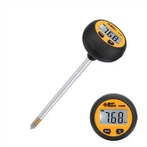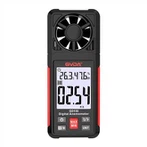What are the factors that cause damage to a digital multimeter?
A digital multimeter is a measuring instrument that uses the analog/digital conversion principle to convert the measured quantity into a digital quantity and displays the measurement results in digital form. Compared with analog multimeters, digital multimeters have the advantages of high precision, fast speed, large input impedance, digital display, accurate readings, strong anti-interference ability, and high degree of measurement automation, so they are widely used. So what are the factors that cause damage to a digital multimeter?
What are the factors that cause damage to a digital multimeter?
1. In most cases, the damage of the digital multimeter is caused by the wrong measurement gear. For example, when measuring AC mains power, the measurement gear is placed in the electrical block. In this case, once the test leads contact the mains power, the multimeter can be damaged instantly. Internal components are damaged. Therefore, before using a multimeter to measure, be sure to check whether the measurement gear is correct. After use, set the measurement selection to AC 750V or DC 1000V, so that no matter what parameters are mismeasured during the next measurement, the digital multimeter will not be damaged.
2. Some digital multimeters are damaged because the measured voltage and current exceed the measurement range. For example, measuring the mains power at the AC 20V range can easily cause damage to the AC amplifier circuit of the digital multimeter, causing the multimeter to lose its AC measurement function. When measuring DC voltage, if the measured voltage exceeds the measurement range, it is also easy to cause circuit failure in the meter. When measuring current, if the actual current value exceeds the range, it will generally only cause the fuse in the multimeter to blow out and will not cause other damage. Therefore, when measuring voltage parameters, if you do not know the approximate range of the measured voltage, you should first put the measurement gear in gear, measure the value and then change gears to obtain a comparative value. If the voltage value to be measured is far beyond the maximum range that the multimeter can measure, an additional high-resistance measuring pen should be used. Such as detecting the second anode high voltage and focusing high voltage of black and white color TV sets.
3. The upper limit range of DC voltage of most digital multimeters is 1000V. Therefore, when measuring DC voltage, if the voltage value is below 1000V, the multimeter will generally not be damaged. If it exceeds 1000V, the multimeter is likely to be damaged. However, different digital multimeters may have different upper limits of measurable voltage. If the measured voltage exceeds the range, a resistance step-down method can be used to measure it. In addition, when measuring a DC high voltage of 40O ~ 1000V, the test leads must be in good contact with the measuring point without any jitter. Otherwise, in addition to causing damage to the multimeter and making the measurement inaccurate, in serious cases the multimeter may not have any show.
4. When measuring resistance, be careful not to measure while it is live.






